Pair prepare for expedition from Newhaven to Norway in converted lifeboat
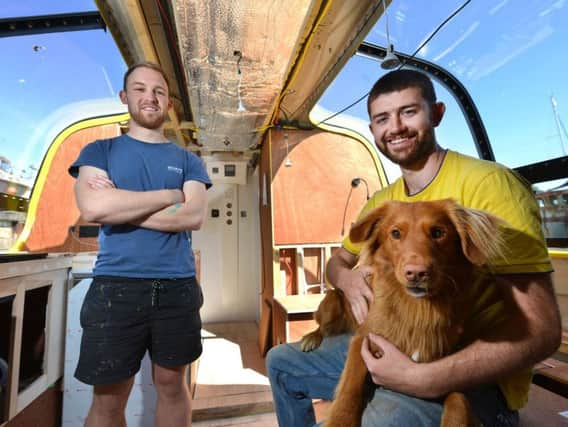

Guylee Simmonds and David Schnabel have spent over a year re-purposing a 100-person marine survival vessel moored in Newhaven for a 3,500km adventure to Tromsø.
The pair, who studied at Cardiff University together, are planning to set off tomorrow morning (Monday, May 19) following a sea trial yesterday (Saturday, May 18).
Advertisement
Hide AdAdvertisement
Hide AdGuylee, from Piddinghoe, says the idea of a trip to Norway was the 'light at the end of the tunnel' when they were finishing their seven-year university course.
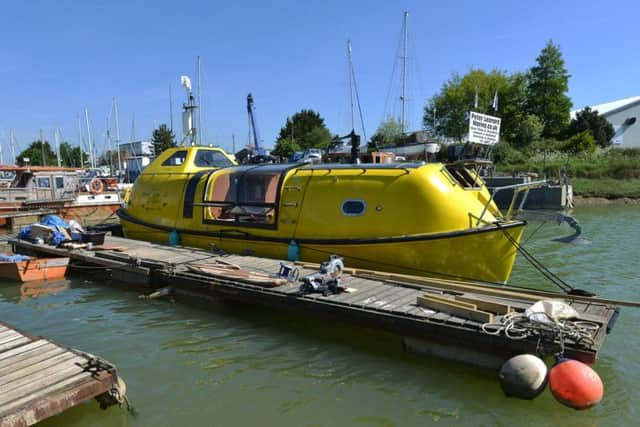

He said: “It started as a hiking trip to Norway, then grew more and more ambitious and essentially became what it is now – a conversion of a 100-person lifeboat to use as a base for hiking and exploring and travelling around the coast of Norway."
They bought the lifeboat at auction in February last year for £8,000 from Scottish company CalMac Ferries and it arrived at Lochin Marine, Newhaven, via low loader from Glasgow a few weeks later.
“It was a big fibreglass blank canvas for us to do what we wanted within,” explained Guylee on the conversion.
Advertisement
Hide AdAdvertisement
Hide Ad“It was full of seats for 100 people which we stripped out and other than the engine and the fibreglass fabric everything has either been removed or replaced."
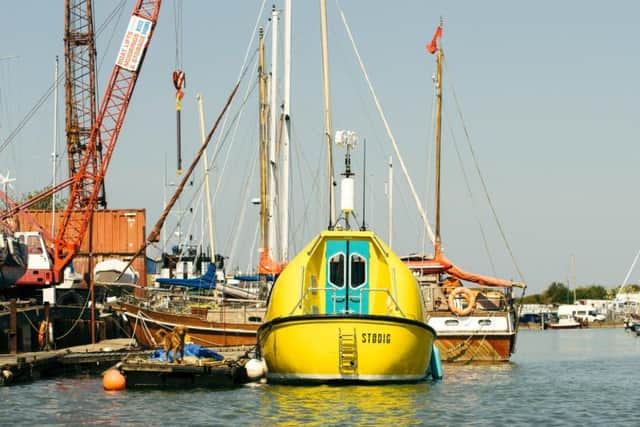

It now has two double cabins, a seating area, a kitchen, a bathroom with shower, a pair of bunk beds, a wheelhouse, from where they will steer the lifeboat, and a cockpit in the stern to act as a comfortable outside space.
They have installed a plumbing system and electricity, and intend to generate power through solar panels on the roof and via a wind generator on the mast. To minimise their waste output, and so they do not need to reach pump-out facilities, they have also put in a composting toilet.
The lifeboat, which they have named Stødig after the Norwegian adjective meaning steadfast and sound, has also gone from a survival orange to a bright yellow.
Advertisement
Hide AdAdvertisement
Hide Ad"We wanted to make ourselves distinct from original colour of the lifeboat but we knew it was quite a unique looking boat and quite distinctive so we didn't want to shy away from that and paint it sort of a mild colour. We thought we would keep the bold aesthetic of it and that bold aesthetic has informed a lot of how we have designed the boat," said Guylee.
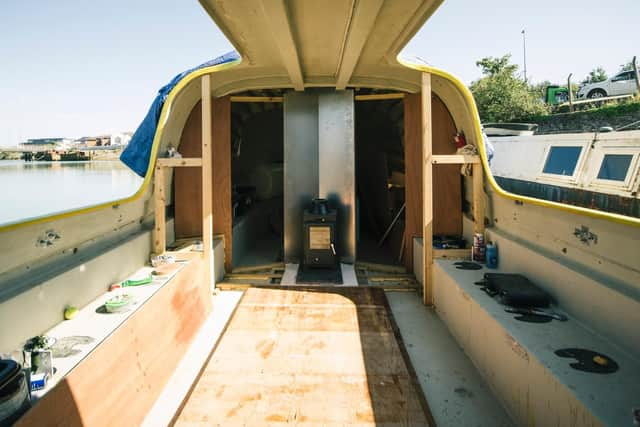

The work has taken a lot longer than they originally expected.
"I don't think we ever quite could have envisaged how much work it was going to be,” said Guylee.
"Originally we'd actually sort of dreamt of buying the boat, converting it over a few months and leaving last year, and then a mixture of sort of our ambition to how well we could do the project as architects but also just the fact that we really, other than having the fibreglass shell, were doing everything from scratch and needed to earn the money to do it at the same time meant that it's taken a lot longer than we originally expected."
Advertisement
Hide AdAdvertisement
Hide AdFrom Newhaven, Guylee and David plan to cross the Channel, go up the Belgium and Dutch coast, and pass through the Kiel Canal, in northern Germany, to the Baltic. They will then travel up the coast of Denmark and Sweden to Norway's capital, Oslo, and go across the Skagerrak to Bergen. From there, they will travel up the coast of the Norwegian fjords to Tromsø, where they plan to spend the winter.
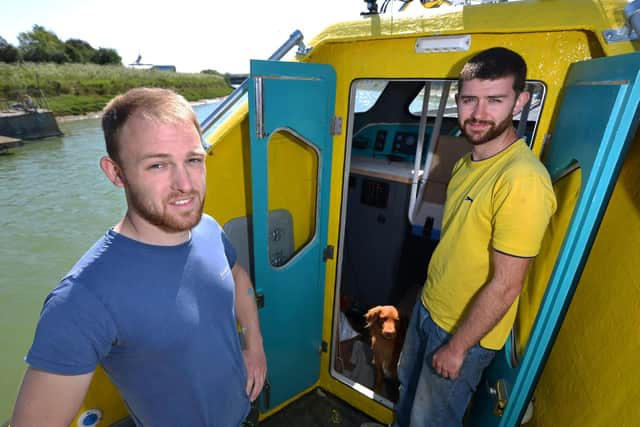

Although they say they could do the voyage in a couple of weeks, they plan to take around four months to reach Tromsø.
David, from Farnham, Surrey, said: “We have a rough idea of the main ports or places that we're going to stop en route to just influence or at least start to form a route plan.
“I think the thing with this kind of slow journey or adventure is we’re hoping to just stumble across places and find places that we weren’t necessarily looking to stop at from the outset but actually places which really kind of grab us and peak our interest."
Advertisement
Hide AdAdvertisement
Hide AdHe added: "That's the fun of it really - not really expecting what it's going to turn out to be but taking it as it comes."
They will not be the only crew members. Joining them will be Guylee's dog Shackleton, a Nova Scotia duck tolling retriever.
"He loves snow and cold weather and he particularly loves swimming so he's the perfect boat companion, and he'll help keep Dave and I a little sane on the voyage and provide us with good excuses to go ashore and walk him," said Guylee.
Guylee and David have received support for the project from companies donating products and through sponsorship. In keeping with boating tradition, they have also sold 64 shares in the lifeboat; when the boat is sold the profits from the shares are to be donated to healthcare charity Hope Health Action.